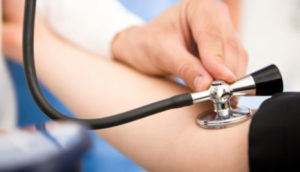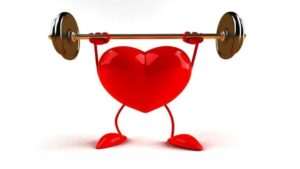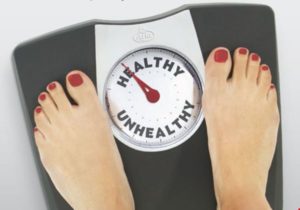Coronary Artery disease is the disease that causes angina and heart attacks (also known as coronary heart disease) is still one of the main causes of death and disability in Australia. While there are some risk factors, such as age and family history, that can’t be changed, there are several other risk factors that can be modified to help keep your heart healthy, especially as you get older.
If you are aged 45 years or older (35 or older if you are Aboriginal or Torres Strait Islander), it is worth seeing your doctor to have your risk of heart disease assessed. Your doctor can identify any risk factors you have and give you a personal heart and stroke risk score, which helps to manage all of your risk factors together.
Reducing the risk
Simply put – a healthy lifestyle means not smoking, eating a healthy diet, getting enough physical activity and maintaining a healthy weight which can help protect your heart. It can also keep you feeling and looking better for longer. And what’s more, making some positive lifestyle changes can stabilise heart disease in those who already have it and reduce the risk of further heart problems. Here are some steps to protect your heart.
1. Stop smoking
Smoking is a major contributor to coronary heart disease. Of all the risk factors for heart disease smoking is the most dangerous. Smoking increase the risk of death from coronary heart disease by up to 4 times.
If you are a smoker, quitting is the most important step you can take to reduce your risk of heart disease. In fact, your risk drops dramatically just 12 months after quitting.
Try to avoid second hand smoke too,

Quitting is the most important step you can take to reduce your risk of heart disease
2. Keep your blood pressure down
If you have high blood pressure then you are more likely than someone with normal blood pressure to have a heart attack. And because there are often no symptoms associated with mild-to-moderate high blood pressure, it’s important to have regular blood pressure checks to ensure that you are not at risk without knowing it.
Fortunately, there are several lifestyle alterations that can help lower blood pressure, including:
- losing any excess body weight
- exercising
- reducing salt in your diet
- limiting alcohol and
- stopping smoking
You may also need to take blood pressure-lowering medicine in addition to these lifestyle modifications.

It’s important to have regular blood pressure checks.
3. Control your cholesterol
Most people know that a high cholesterol level is bad for them. This is because high levels of cholesterol (a fat-like substance in the blood) increase your risk of coronary heart disease. One type of cholesterol called LDL (low density lipoprotein) cholesterol is also known as 'bad' cholesterol because it is especially dangerous for your heart.
A healthy diet and exercise are both important in keeping your cholesterol levels in check. You can lower your LDL cholesterol level by reducing the amount of saturated fat and trans fat in your diet. Eating plenty of soluble fibre, fruit and vegetables and exercising regularly can also help control your cholesterol.
There are medicines available that can reduce your cholesterol level if lifestyle modifications have not been sufficiently effective. But remember, it's still important to eat a healthy diet to reduce your cholesterol and keep it down. Cholesterol-lowering medicines are not designed to allow you to eat whatever you want without any consequences!

A healthy diet and exercise are both important in keeping your cholesterol levels in check.
4. Get physical
A sedentary lifestyle also increases your risk of developing coronary artery disease.
The good news is that even moderate-intensity physical activity, which includes everyday activities like gardening and housework, can reduce your risk. But the best exercise for your heart is aerobic exercise. That’s because it can help control your cholesterol levels, as well as reduce blood pressure, body fat and mental stress. Combining exercise with other lifestyle measures, such as maintaining a healthy weight, is even better protection for your heart.
Try to get in at least 30 minutes of moderate-intensity physical activity on most (if not all) days of the week. You can make up your 30 minutes in bouts of 10 minutes or more if that’s more convenient. And remember, it’s never too late — even if you’ve already had a heart attack, exercise can reduce your chances of having another one. However, it’s important to always check with your doctor before you start exercising to ensure that the activity is suitable for your current level of fitness.

It’s never too late! Even if you’ve already had a heart attack, exercise can reduce your chances of having another one.
5. Eat a healthy diet
Saturated fat and trans fat (also called trans-fatty acids) are 2 types of fat that not only contribute to weight gain, but also raise your blood cholesterol. So you should avoid, or at least cut down on, foods that contain these fats, including:
- fast foods
- fried foods
- cakes, pies and pastries
- full-fat dairy products and
- processed meat products such as salami and sausages
As well as reducing the amount of saturated and trans fat in your diet, it's a good idea to reduce:
- refined carbohydrates (e.g. white bread, white rice)
- foods containing added salt (e.g. highly processed foods, many types of bread)
- foods that are high in calories but low in nutrients; and
- foods with added sugar
A diet that contains a wide variety of foods, including plenty of fruit, vegetables and whole grains can reduce your risk of heart disease, so aim for at least 5 servings of vegies and 2 of fruit every day. Omega-3 fatty acids, found naturally in seafood, can also reduce your risk of heart disease, so try to include oily fish or other seafood in your diet 2-3 times a week.
Alcohol should be limited to 2 or fewer standard drinks per day.

A diet that contains a wide variety of foods.
6. Maintain a healthy weight
Being overweight not only increases your chances of having high blood cholesterol levels, diabetes and high blood pressure, but it’s also an independent risk factor for heart disease. So even if you’re otherwise healthy, being overweight means you are more likely to develop heart disease.
As well as your overall weight, the distribution of your body fat is important in determining your risk. Body fat stored around your waist is associated with a higher risk than fat that is stored around the hips and thighs.
Maintaining a healthy body weight can reduce your risk of heart disease. And even a small amount of weight loss can be beneficial if you’re overweight — by losing just 5 to 10 per cent of your body weight, you can help lower your risk of heart disease, blood pressure, cholesterol and risk of developing diabetes.

And even a small amount of weight loss can be beneficial if you’re overweight.
7. Look after your psychological health
Psychological and social factors, including depression, social isolation and lack of quality support, have also been found to increase the risk of heart disease. In fact, the risk from these psychological factors is similar to that with better known risk factors such as smoking, raised cholesterol and high blood pressure. Depression can be treated with non-medical therapies and with medicines. If you think that you have depression, talk with your health professional.
So lifestyle changes can go a long way to protecting your heart. And remember, it’s never too late to stop smoking, change your diet or get active.

Think your way to a healthier body and life.

